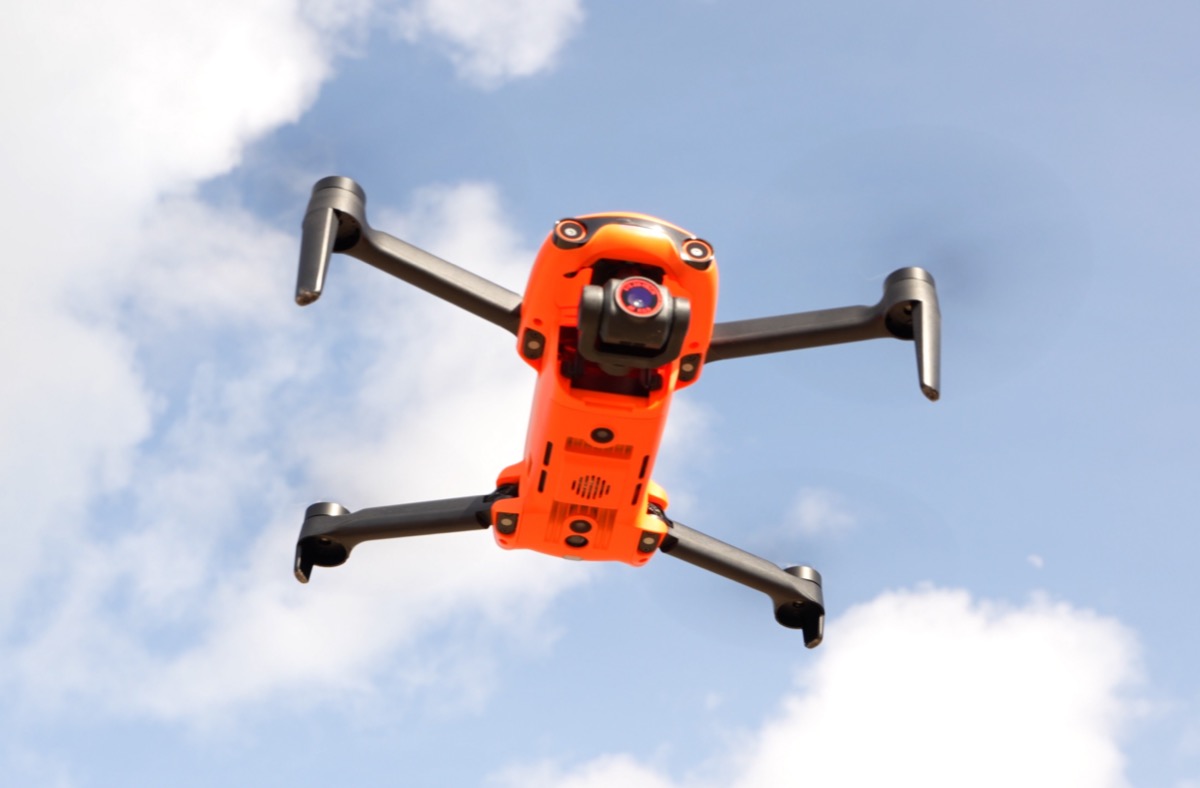If you’re curious or you want a reminder of the specs, you can read my first impressions of this drone here. For a sub-250g drone, the EVO Nano+ is a good drone. It’s small, pretty easy to fly, and a little harder to crash than its closest competition - thanks to its front-, rear-, and downward-facing obstacle avoidance sensors. I’ve tested the sensors, and they do work, although I consider them more an emergency thing than something I’d rely on. But they do work and work pretty well, although there are still at least three easy ways to send the EVO Nano+ into an immovable object:
Switching it to “ludicrous” mode, which disables the collision sensorsForgetting it doesn’t have side sensors and sideswiping somethingFlying it into something that the sensors cannot see (like fine tree branches)
So, yeah, you can still crash this drone, for sure. The camera on the EVO Nano+ is also decent, at least on paper. It features a 1/1.28-inch (0.8-inch) CMOS sensor with an f/1.9 lens mounted on a 3-axis stabilization gimbal that can shoot 12.5-megapixel and 50-megapixel photos and 4K video up to 30 frames per second. However, there’s not an awful lot of control available over the camera, so the output is more aimed at social media and fun than it would be towards creating professional content. The drone feels plasticky, and the controller is basic, but they do the job. It’s also not the most stable drone when flying. Now, I’ve got experience flying a lot bigger and heavier drones than the EVO Nano+, so this might be just my impression. But all small drones are more erratic in flight compared to their bigger and heavier siblings, although I do feel there’s room for improvement with the EVO Nano+ with future firmware updates. Let’s come to the real problem with the EVO Nano+. The price. The EVO Nano+ standard bundle has a recommended retail price of $949, while the premium bundle is $1,099. Compare this to its closest competitor – the DJI Mini 2 – where you can pick up the standard package for $449, or the “fly more combo” package for $530. This means the EVO Nano+ is almost twice the price of the Mini 2, which makes it hard to recommend. It’s a good drone. A great drone. But it’s hard to say that it’s worth double the price of the Mini 2, which is also a great drone. And the Mini 2 has a price tag that’s a lot easier to swallow. If I narrow my focus down to the two main differences, which are the camera and the obstacle avoidance system, I can ask the simplest of questions – are these improvements worth the extra money? On paper, the camera on the EVO Nano+ is superior to the camera on the Mini 2. In reality, it’s hard to see those differences. Maybe in low light there’s a little difference, sometimes, but not a lot of people are going to be flying this drone at night or dawn/dusk. The camera is further hampered by the fact that the controls offered within the fly app are somewhat basic, so the output you end up with is mostly out of your hands. What about the collision sensors? Well, they work, but they’re not magic. As I said, you can still, definitely, crash this drone, either by thinking you’re smarter than it and disabling the sensors or by forgetting the limitations of the system. It’s there as an emergency feature, not something you should rely on. But they could save your drone. That’s a plus point for sure, especially for those that might be worried about crashes. Some will say that I shouldn’t compare the EVO Nano+ to DJI’s Mini 2 and that instead, I should wait for the Mini 3. I’d much rather compare real products than start to bring unicorns into the equation, and while I think that any Mini 3 that DJI launches might have a heftier price tag, in every other way it’s likely to increase the lead it has over the EVO Nano+. Bottom line, I quite like the EVO Nano+. It’s a fun drone with some cool features, and it packs down small. But I keep coming to that price tag. I like it, but I don’t like it so much that it makes me overlook just how pricey this drone is. Even if you’re worried about crashes and think the sensors might save you, you could buy two Mini 2 drones for the price of one EVO Nano+.
